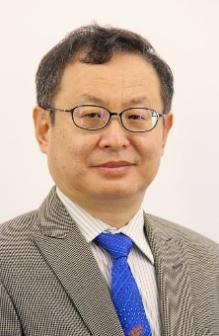主讲人一:牛建磊
讲座标题:Urban Microclimate Engineering – a multidisciplinary approach to create thermal comfort outdoors
讲座时间:2024年4月11日 14:00—15:00
讲座地点:L栋204室
主讲人一简介:

Professor Niu is currently Chair Professor of Building, Environment and Energy, and associate director of Otto Poon Charitable Foundation Smart City Research Institute, at the Hong Kong Polytechnic University. His technology contributions are in a broad area linking thermal and fluid sciences with building environment control and have won him numerous awards. He won twice the prestigious ASHRAE distinguished lecturer - sponsored by AHRAE to give lectures in five member countries. He was invited to co-author WHO design guidelines 2009 "Natural ventilation for infection control in health care settings". He was awarded by SHASEJ the Uichi Inouye Asia International Award in 2024. His research on human-oriented outdoor thermal environment evaluation and optimization design won the Excellence Award of APEC INPUT2(The “Innovating for Public Urban Technology Transformation Competition”) in 2024, which is organised by China and funded by the Asia-Pacific Economic Cooperation (APEC). He is ranked World’s Top 2% Scientists Released by Stanford University. He was awarded the fellowship by three leading societies, ASHRAE, ISIAQ and IBPSA. He is now an editor -in- chief of the Elsevier journal Energy and Buildings, and a member of Engineering Panel of Hong Kong Research Grant Council.
讲座内容简介:
In this presentation Prof. Niu will speak of the research outcome of a successful RGC Collaborative Research Fund project, which demonstrated that outdoor localised comfort hubs (LoCH) exist in a town center even in a high-density urban environment like Hong Kong with a hot, humid summer, and that, in particular, the semi-outdoor space created by lift-up building design was favorable for thermal comfort due to the combined effects of shading and induced wind downwash. While we cannot change the climate of a whole city, we can create LoCHs to pervade all neighbourhoods in proportion to their scales to raise thermal comfort. By employing a scientific microclimate design methodology based on advanced modelling and simulation of wind, heat, and moisture at the early building design and planning stage, thermal and wind comfort can be maximized and thermal stress risk can be minimized, via an optimized combination of building forms and their relative locations in a precinct with assisting vegetation, water, surface materials, and ad hoc pavilions and other mechanical means, and the same idea can also be applied to infill redevelopment projects and other property development to create LoCHs in an existing neighbourhood. Prof. Niu will also speak of the potential impacts to the architectural design and planning practice to improve contemporary and future urban liveability and sustainability, and to cope with a rapidly changing climate.
主讲人二:于一晨
讲座标题:Onsite measurements of pedestrian-level wind and its impact on thermal comfort in the urban environment
讲座时间:2024年4月11日 15:00—16:00
讲座地点:L栋204室
主讲人二简介:

Dr.Yichen Yu is currently a research assistant professor in the Department of Building Environment and Energy Engineering at the HKPolyU. She received her Bsc in Building Environment and Energy Engineering from Central South University, and PhD in Architecture Science and Design from the University of Sydney. Before joining PolyU in 2022, she worked as a research associate at UNSW Built Environment. Yichen’s research efforts are directed towards outdoor thermal comfort, with a particular interest in the role of wind. Her research mainly focused on two streams a) pedestrian level urban wind environment measurements and parameterizations, b) the effect of wind and turbulence on thermal comfort.
讲座内容简介:
In this presentation, Dr Yu will speak of turbulence conditions inside cities, and its effect on the thermal comfort of pedestrians. Wind environment inside a city was measured in a variety of urban settings using sonic anemometry to characterise urban atmospheric turbulence. Those observed turbulent conditions were then reproduced in a wind tunnel using a passive grid system. A full-sized thermal manikin was used to measure convective heat transfer coefficients. Physical analyses were supplemented with human subject experiments in which physiological and psychological responses to those turbulent wind tunnel exposures were captured.